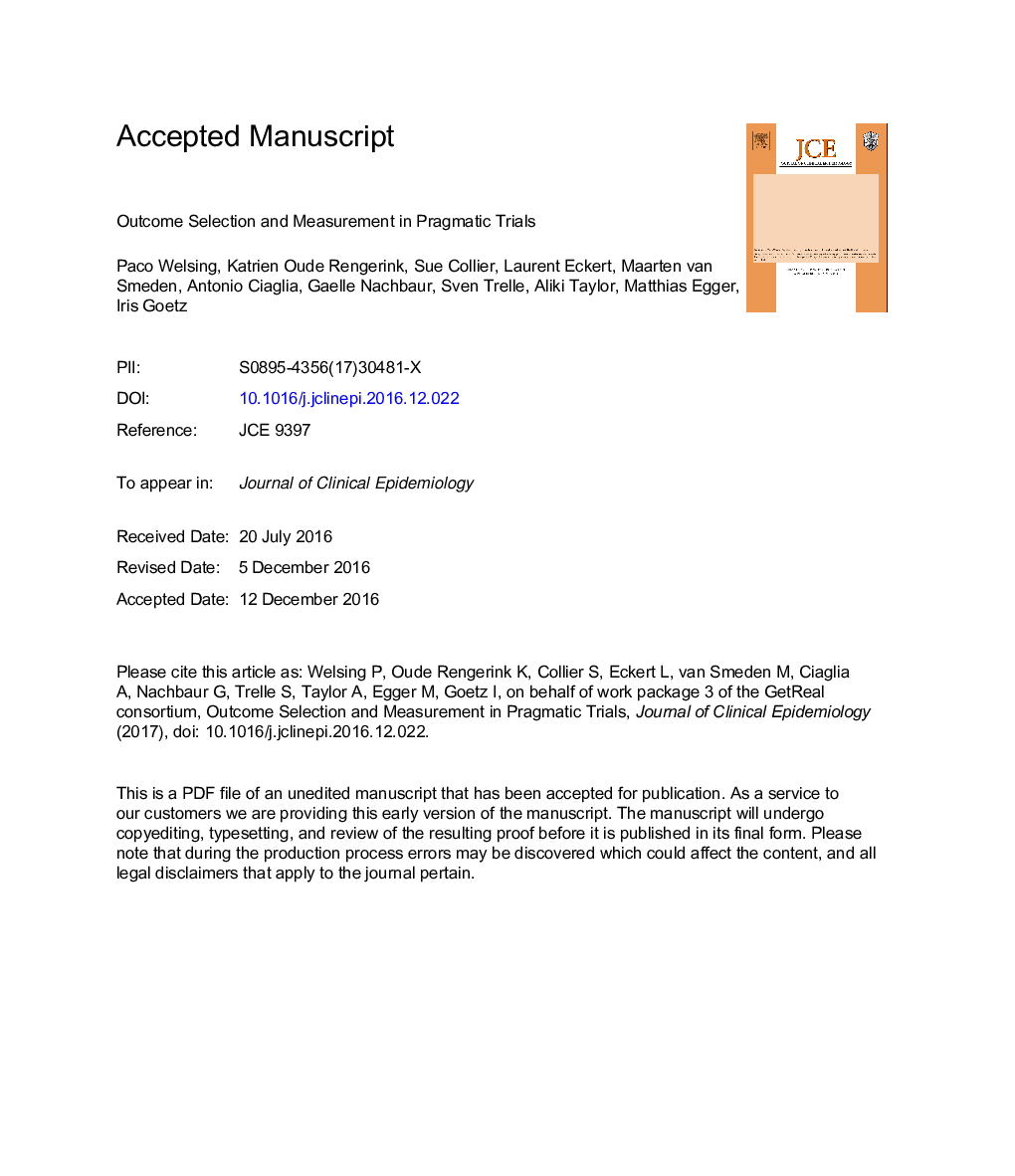| Article ID | Journal | Published Year | Pages | File Type |
|---|---|---|---|---|
| 7519428 | Journal of Clinical Epidemiology | 2017 | 28 Pages |
Abstract
Results from pragmatic trials should reflect the comparative treatment effects encountered in patients in real-life clinical practice to guide treatment decisions. Therefore, pragmatic trials should focus on outcomes that are relevant to patients, clinical practice, and treatment choices. This sixth article in the series (see Box) discusses different types of outcomes and their suitability for pragmatic trials, design choices for measuring these outcomes, and their implications and challenges. Measuring outcomes in pragmatic trials should not interfere with real-world clinical practice to ensure generalizability of trial results, and routinely collected outcomes should be prioritized. Typical outcomes include mortality, morbidity, functional status, well-being, and resource use. Surrogate endpoints are typically avoided as primary outcome. It is important to measure outcomes over a relevant time horizon and obtain valid and precise results. As pragmatic trials are often open label, a less subjective outcome can reduce bias. Methods that decrease bias or enhance precision of the results, such as standardization and blinding of outcome assessment, should be considered when a high risk of bias or high variability is expected. The selection of outcomes in pragmatic trials should be relevant for decision making and feasible in terms of executing the trial in the context of interest. Therefore, this should be discussed with all stakeholders as early as feasible to ensure the relevance of study results for decision making in clinical practice and the ability to perform the study.
Related Topics
Health Sciences
Medicine and Dentistry
Public Health and Health Policy
Authors
Paco M. Welsing, Katrien Oude Rengerink, Sue Collier, Laurent Eckert, Maarten van Smeden, Antonio Ciaglia, Gaelle Nachbaur, Sven Trelle, Aliki J. Taylor, Matthias Egger, Iris Goetz,
